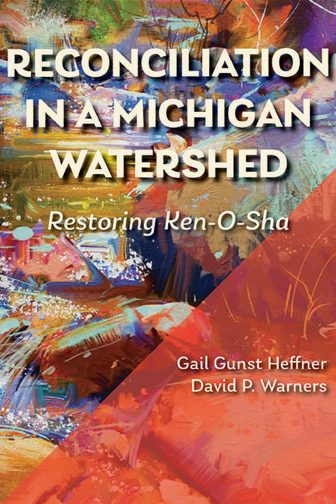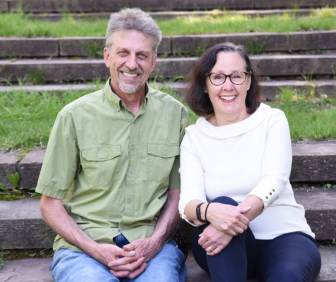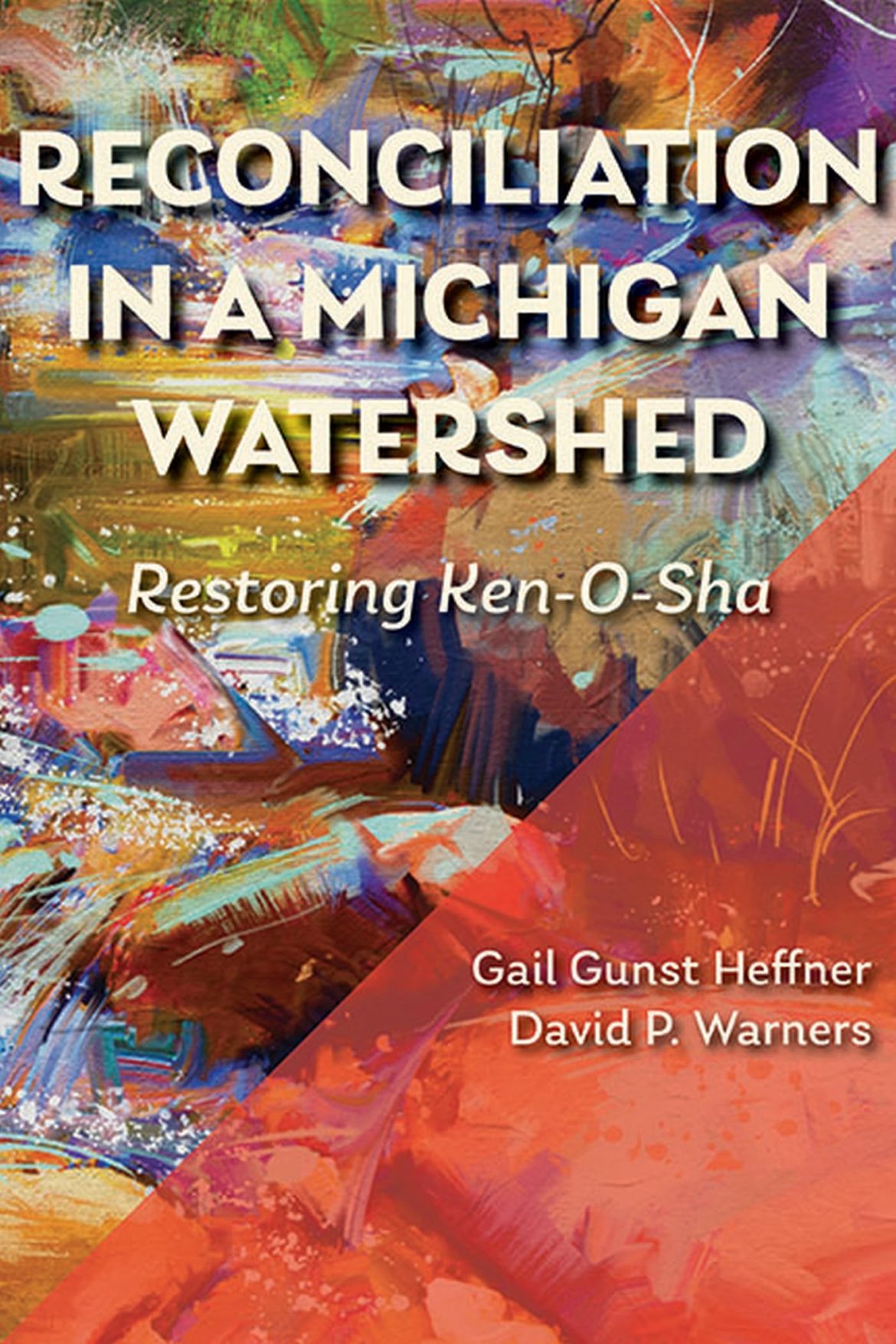
The cover of “Reconciliation in a Michigan Watershed: Restoring Ken-O-Sha.” By: Michigan State University Press
By Isabella Figueroa
Hundreds of years ago, the Ottawa people called it Ken-O-Sha, or “water of the walleye”—a 26-mile tributary of Michigan’s Grand River where the fish were abundant.
Today it is known as Plaster Creek, a name that refers to the gypsum mines that polluted the waterway near Grand Rapids beginning in the mid-19th century and drove away the walleye.
A new book by two Calvin University professors explores an ongoing effort to restore Plaster Creek to a healthy stream worthy of its original name.
A creek that “was known for the living creatures in the water got changed to a resource that was used to promote great wealth for certain people, not all people,” said co-author Gail Heffner, emerita professor of urban studies. “So our hope would be to be able to rename the creek someday.”
Four years in the making, “Reconciliation in a Michigan Watershed: Restoring Ken-O-Sha” highlights the Plaster Creek Stewards, an initiative launched in 2009 by the book’s authors and led by Calvin faculty, staff and students to improve the watershed with help from local schools, churches and other partners.
The book began as an oral history of the Plaster Creek Stewards. As Heffner and her co-author, biology professor David Warners, spoke with more people, they decided that the wealth of valuable information they were gathering called for its own book.
“Hearing stories from people that have a long history with this part of Grand Rapids or West Michigan, we felt like it’d be a good thing to get some of those stories out,” Heffner said.

David Warners and Gail Heffner, co-authors of a new book about the Plaster Creek Stewards, a group they co-founded. By: Laura Hoeksema
Heffner and Warners said Plaster Creek is an important part of their lives at Calvin.
They also learned a great deal about the watershed and its history, they said, including gaining a better understanding of the relationship the Ottawa people had with the creek before white settlers arrived.
“They adapted when there were certain crises that they faced, and they knew how to care and live sustainably in this landscape,” Heffner said. “Only in the last 200 years, since European settlers arrived, has the degradation begun and the water become as contaminated as it is.”
Warners and Heffner said that learning from Indigenous people has shaped their knowledge of human connectivity, which has helped them to run Plaster Creek Stewards events where people from all walks of life come together to plant trees and otherwise improve the watershed’s health.
“There was one of these events where we had an 18-month-old planting native plants into the soil with their parent at the same time as we had an 81-year-old at the same event, planting in another section,” Heffner said. “You know, it’s like, wow, this is just beautiful. It’s all ages of people, all different backgrounds.”
“Reconciliation in a Michigan Watershed: Restoring Ken-O-Sha” is published by Michigan State University Press and is available for $29.95.
